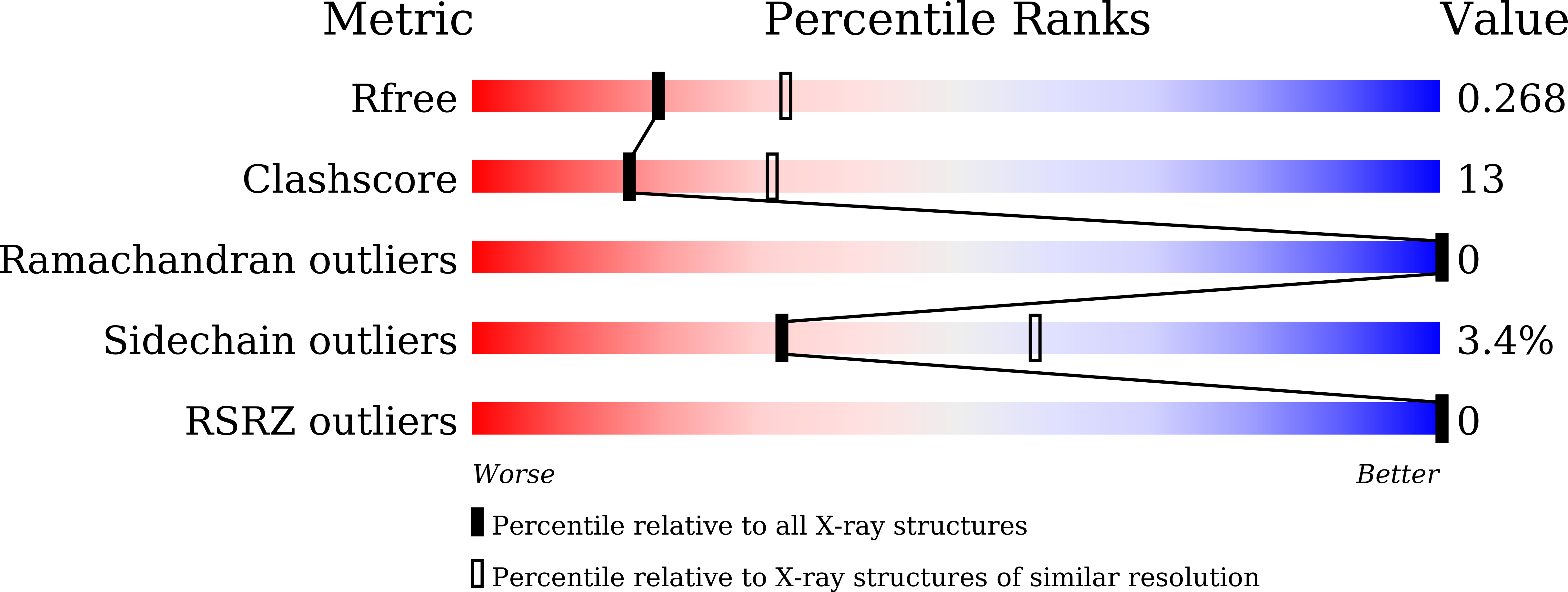
Deposition Date
2024-02-21
Release Date
2025-01-15
Last Version Date
2025-07-30
Entry Detail
PDB ID:
8YDT
Keywords:
Title:
Crystal structure of the receptor binding domain of SARS-CoV-2 Alpha variant spike protein in complex with Ce41
Biological Source:
Source Organism:
Severe acute respiratory syndrome coronavirus 2 (Taxon ID: 2697049)
synthetic construct (Taxon ID: 32630)
synthetic construct (Taxon ID: 32630)
Host Organism:
Method Details:
Experimental Method:
Resolution:
2.50 Å
R-Value Free:
0.26
R-Value Work:
0.22
R-Value Observed:
0.23
Space Group:
P 31


